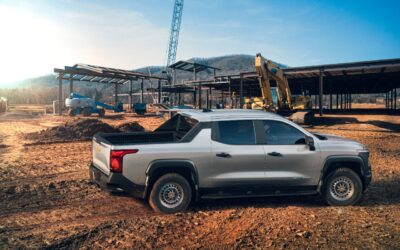Top Innovative EV Fleet Solutions for Sustainable Business Operations

Navigating the EV fleet solutions landscape? Gain insight into the critical aspects of deploying and managing an electric fleet. From embracing the right strategies and software to navigating financial incentives and overcoming operational hurdles, this article provides clear guidance and practical solutions to make your transition to an electric fleet smooth and beneficial.
Key Facts to Remember
- Effective EV fleet management involves strategic planning, mastery of operations, and consideration of total cost of ownership for financial viability.
- The average total cost of ownership for electric vehicles can be up to 20% lower than traditional internal combustion engine vehicles due to reduced fuel and maintenance costs.
- Implementing a robust charging infrastructure can increase fleet efficiency by up to 30%, ensuring vehicles are always ready for use.
- Advanced telematics can improve fleet performance by up to 25% through real-time data analysis and predictive maintenance.
- Government incentives can cover up to 30% of the initial costs associated with purchasing electric vehicles and installing charging stations.
Mastering EV Fleet Management: Key Strategies
Effectively managing an EV fleet can feel like navigating uncharted waters. It demands a combination of strategic foresight, operational expertise, and a sharp focus on financial performance. Fleet managers are transitioning from traditional internal combustion engines to the quiet efficiency of electric power, tackling the complexities of electric fleet operations, and steering towards a future where EV fleets become the standard.
With the right EV fleet management software and a solid grasp on electric vehicle fleet assets, the transition to electric vehicles (EVs) can be smooth sailing for fleet vehicles of all sizes.
Strategic Planning for EV Transition
The path to electrification starts with strategic planning and digital simulation tools, acting as your guide. These tools are essential for planning the shift to a fully electric fleet. Fleet electrification is more than just swapping out internal combustion vehicles (ICE) for electric trucks; it’s about aiming for a zero-emission future and using EV charging solutions that fit your electrification goals.
Consulting with experts and harnessing cutting-edge simulations can illuminate the path forward, ensuring a transition that’s as efficient as it is environmentally conscious.
Electric Fleet Operations Mastery
However, what happens when theory meets practice? Succeeding in electric fleet operations requires learning new skills and changing how we think. It’s about understanding the unique challenges of managing electric vehicles, such as fleet charging and the regenerative braking that changes how driving works.
Training employees to embrace these changes is just as crucial as the technology itself, ensuring every link in the operational chain is strong, from fleet operators to the drivers behind the wheel.
Total Cost of Ownership Analysis
Moreover, the financial compass that directs this journey—the total cost of ownership analysis—should not be overlooked. This critical evaluation looks beyond the sticker price of electric vehicles to the horizon of long-term savings. From reduced charging costs to lower maintenance expenses, the economic winds can blow favorably for those who choose to sail with electric fleets.
It’s about seeing the bigger picture and how the investment in electrification can lead to a sea of savings.
Electrification Journey: Steps to a Zero-Emission Fleet
The decision to embark on the electrification journey is a smart move towards a cleaner and zero-emission fleet. It starts with introducing electric vehicles and evolves into a process that changes how transportation works. By choosing the best routes for EVs and the right mix of electric fleet operations, businesses can move towards a sustainable future.
Initial Assessment and Feasibility
Firstly, defining the path requires an initial evaluation along with a comprehensive understanding of your fleet’s potential for electrification. This entails a deep dive into your specific driving and duty requirements, ensuring that the electric vehicles you select can handle the load and go the distance.
It’s about making informed decisions, with a keen eye on the availability of charging stations, to guarantee that your fleet’s transition to electric is not just possible but practical.

Implementing Charging Infrastructure
Subsequently, launching an electric fleet implicates establishing a strong charging infrastructure as your anchor. This step is all about laying down the groundwork for your EVs—choosing the right type of charging stations and coordinating with stakeholders to ensure that your electric fleet is always powered up and ready to go.
With innovative technologies like vehicle-to-grid integration, your fleet can not only draw energy but also contribute to the grid’s stability, proving that sustainability and synergy go hand-in-hand.
Monitoring and Scaling
As your fleet set off on its electrification journey, keeping a close eye on progress and scaling accordingly is vital to maintain momentum. It’s not just about managing what’s currently on deck but also preparing for what’s beyond the horizon. By employing tools like EVI-LOCATE, fleet operators can forecast future needs, plan for infrastructure enhancements, and ensure that the fleet can grow sustainably.
With strategic planning and government incentives, the challenges of charging infrastructure and initial costs become manageable obstacles.
Innovative EV Fleet Solutions and Technologies
A plethora of innovative solutions and technologies, driving sustainability and efficiency, form the core of an electric fleet. From the light-weighting of vehicles with composite materials to the integration of sophisticated power electronics, these advancements are steering fleets towards an era of enhanced performance and environmental stewardship.
In today’s digital era, infotainment systems and Advanced Driver Assistance Systems (ADAS) have evolved from being mere luxuries to essential features that ensure fleets remain connected and safe on the road.

Advanced Telematics Data Utilization
Harnessing the power of advanced telematics data is akin to having a bird’s-eye view of your fleet’s electrification potential. By analyzing real-time data, fleet managers can make strategic decisions that optimize the total cost of ownership, ensuring that every kilowatt-hour is spent wisely.
Telematics tools offer a panoramic perspective, from battery health to charging patterns, providing the insights needed to navigate the electrification journey with confidence.
Integration of Renewable Energy Sources
The integration of renewable energy sources propels electric fleet operations into a new realm of sustainability. By harnessing the power of the sun and wind, electric trucks can reduce their reliance on the grid, minimize connection costs, and bolster their green credentials.
When fleets tap into vehicle-to-grid technology, they become more than transporters—they become power providers, contributing to a renewable energy ecosystem that benefits all.
Real-Time Fleet Management Software
In the fast-paced realm of EV fleet management, every decision is guided by real-time fleet management software acting as a compass. Modern platforms like Motive allow fleet managers to keep a constant watch on their electric fleet, from vehicle location to state-of-charge.
With such tools at their disposal, managers can make informed decisions that optimize performance and prepare their fleets for the future.
Customizable Dashboards for Fleet Insights
Crucial information is displayed in the customizable dashboards of EV fleet management software, acting as a captain’s quarter. With a clear dashboard, managers can monitor driver behavior, schedule maintenance, and oversee all fleet activities. Real-time insights empower fleet operators to make quick adjustments, ensuring that operations run smoothly and efficiently.
Smart Charging and Energy Management
Smart charging and energy management act as anchors, keeping electric fleets steady. Software like Motive’s offers the following benefits:
- Schedules charging
- Manages energy consumption
- Ensures fleets can harness electricity without overwhelming the grid
- Optimizes charging times and speeds
- Helps maintain a balanced load
- Safeguards the longevity of battery life
Reporting Tools for Compliance and Sustainability
Navigating through regulatory compliance becomes more manageable with the help of advanced reporting tools. Webfleet’s trip logging, for instance, provides detailed reports that help businesses adhere to fleet activity regulations, identify potential cost savings, and bolster their sustainability initiatives. With such tools at their disposal, companies can navigate the complex regulatory landscape with ease.
Case Studies: Successful Partnerships in Action
Real-world case studies offer a glimpse into the successful partnerships that define the EV fleet management landscape. Take Enterprise Fleet Management’s collaboration with Geotab: their large-scale assessment paved the way for significant savings and a substantial reduction in CO2 emissions, showcasing the potential for fleet electrification and the impact it can have on the bottom line and the environment.
Maintenance and Support Services
Smooth operation of electric vehicles requires a strong maintenance strategy and all-encompassing support services. From nationwide service centers to mobile apps offering 24/7 assistance, efficient maintenance management is crucial for keeping EVs performing at their best.
Teaming up with fleet management companies like Summit Fleet can lead to substantial cost savings, due to negotiated services and warranty validations.

Advantages of Electric Trucks in Fleet Operations
Electric trucks bring clear and persuasive advantages to fleet operations. With lower maintenance costs, improved performance, and zero emissions, electric trucks are delivering on the promise of a more sustainable future.
Their ability to double as mobile power sources further enhances their value, especially in work environments where electricity is in high demand.
Overcoming Challenges with Electric Commercial Vehicles
Even with their evident advantages, electric commercial vehicles introduce their unique challenges. From route planning to infrastructure adaptation, fleet operators must approach these challenges with a strategic mindset.
By carefully assessing vehicle selection and infrastructure needs, fleets can overcome obstacles and make the most of electrification.
Financial Incentives and Government Programs
Government programs and financial incentives serve as strong driving forces, pushing fleets towards electrification. These initiatives not only support the adoption of electric vehicles but also enhance the underlying energy policies at various levels of governance.
By taking advantage of these incentives, businesses can significantly reduce the costs associated with electric fleets, including vehicle expenses, charging infrastructure, and utilities.
Understanding Grants, Rebates, and Tax Credits
While navigating through the complex terrain of grants, rebates, and tax credits can be challenging, comprehending these financial mechanisms is crucial to maximize the benefits of fleet electrification. Some of the programs that exist to support the transition to electric fleets include:
- Light-duty vehicle credits
- Infrastructure construction grants
- Charging station rebates
- Vehicle purchase incentives
According to the U.S department of Energy commercial fleets and tax-exempt organizations that buy a qualified commercial clean vehicle may qualify for a clean vehicle tax credit per vehicle (these include all-electric, plug-in hybrid electric, or fuel cell EVs). The maximum credit is $7,500 for qualified commercial clean vehicles with gross vehicle weight ratings of under 14,000 pounds and $40,000 for all other vehicles.
Understanding and taking advantage of these programs can help you make the most of fleet electrification.

Summit Fleet Your EV Solutions Provider
Summit Fleet shines as a beacon of innovation and support on the path to fleet electrification. Whether you’re looking to rent, lease, or manage your fleet, Summit Fleet offers tailored solutions that meet the unique needs of your business.
With a commitment to staying ahead of the curve, especially in states with stringent EV requirements, Summit Fleet is the partner you can rely on for a seamless transition to electric vehicles.
Contact Summit Fleet and Get Your Rate Today!
Summary
As we dock at the end of our journey, we’re reminded that the transition to electric fleet operations is not just a trend but a fundamental shift in how businesses approach transportation.
From strategic planning to innovative technologies, and from financial incentives to the expertise of companies like Summit Fleet, the toolkit for electrification is both comprehensive and accessible. Embrace the current of change, and let your fleet ride the wave toward a sustainable and efficient future.
Interested in trying out an EV? Check out our Chevy Silverado 1500EV and take the risk out of purchasing an EV and rent or lease one with Summit Fleet. Experience the future of transportation without the long-term commitment.






